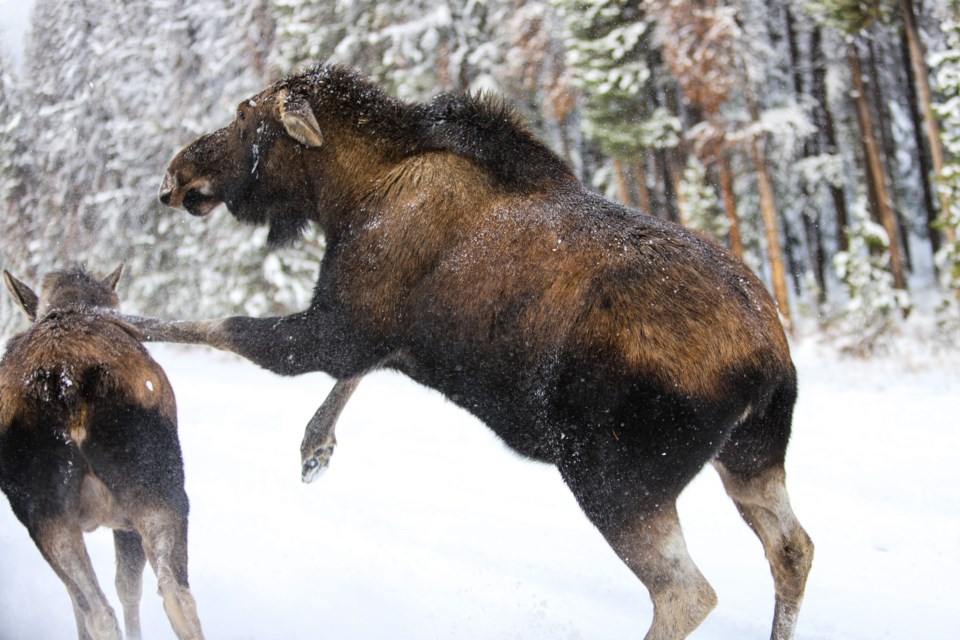Scott Hayes, Local Journalism Initiative Reporter | [email protected]
Yes, Virginia, there are moose on the loose in Jasper National Park, and theyÔÇÖre especially active around the Maligne Lake Road area.
All motorists are advised to be aware of these ungulates ÔÇô the largest and heaviest members of the deer family ÔÇô and to heed some simple words of caution.
The first words: ÔÇťslow down.ÔÇŁ
ÔÇťWe do tend to get them quite regularly on the roads going up there,ÔÇŁ said James McCormick human wildlife conflict supervisor with Parks Canada.
ÔÇťIt's something we do like people to be aware of. If theyÔÇÖre just coming around the corner, there may be a moose straight in the middle of the road licking salt.ÔÇŁ
Moose demonstrate a need to supplement their diets with minerals, including salt. As salt is often used in road management during the winter months, the large animals are naturally drawn to licking the salt off the pavement and off vehicles as well.
ÔÇťIt is something that's a natural need for animals. I think when the snow covers natural salt licks, they might switch to the roads to get that salt,ÔÇŁ he said.
ÔÇťThey'll come down in and around the road for the rut ÔÇô which is mostly wrapped up now ÔÇô and then they start licking the salt on the roads. They also use the road as just a travel corridor because, you know, less snow to walk through than offroad.ÔÇŁ
Although there isnÔÇÖt a firm count of moose in the Maligne Lake Road area, McCormick said that one person reported 13 sightings in one day.
Parks Canada asks people to be aware that itÔÇÖs a slippery road and to drive slowly. When moose are approached by moving vehicles, they often can't run away quickly. Since you can't stop as quickly either, there is a much greater risk of a collision with vehicles struggling to stop.
Moose have been hit on Maligne Lake Road, and some have even been killed on both Highway 16 and Highway 93.
An adult male moose can stand up to 2.1 metres at the shoulder and can weigh 700 kilograms, with females (or cows) coming in as much as almost 500 kilograms.
ÔÇťObviously an animal that big that's going to come across your windshield is a pretty big risk,ÔÇŁ McCormick said.
If you do encounter a moose on the road, slow down and give them space to move off the road. Sometimes they will run down the road trying to get away. In those instances, people are asked to just stop until the animal gets off the road. When moose run, they are expending a lot of energy during a time when they find it challenging already to meet their energy demands. This can be a very stressful situation for them.
ÔÇťIf they lose that much energy, they might not be able to recover it.ÔÇŁ
If they do walk towards you, just try and drive slowly around them. Try not to let them lick the salt off your car, McCormick said.
ItÔÇÖs also important to stay in your vehicle at all times.┬á
Parks Canada also asks people to report wildlife sightings as well as unsafe or aggressive human-wildlife interactions to Jasper Dispatch by calling 780-852-6155.




